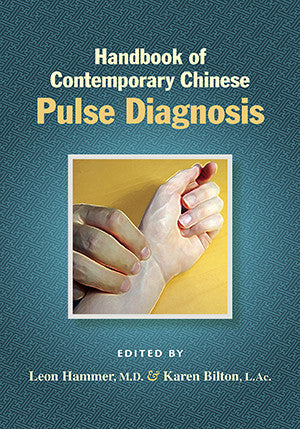
Smyth-sewn softcover
ISBN: 0-939616-76-9
978-0-939616-76-3
Handbook of Contemporary Chinese Pulse Diagnosis
- PDF This eBook is available exclusively as a PDF and is readable with the free Javelin PDF Reader, accessible from your Account page after purchase. See eBook FAQs for details.
Description
Pulse diagnosis is a subtle yet highly effective instrument used in Chinese medicine for the diagnosis and prevention of disease. The method set forth in this book is unsurpassed in obtaining the greatest amount of physical and psychological information about an individual. Although based on traditional methods, it is contemporary because it recognizes that pulse diagnosis must continue to develop over time. In the hands of master pulse diagnostician Dr. John Shen, his apprentice Dr. Leon Hammer, and their students, it has evolved in recent decades to better reflect modern times and lifestyles.
This handbook summarizes the key elements of Chinese Pulse Diagnosis: A Contemporary Approach in a portable edition. It is the result of the very hard work, by many practitioners, of extracting the essentials from each area of this subject. The present volume offers a clear and practical path toward a better understanding of traditional pulse diagnosis, while recasting its interpretation in the context of our own times.
The book is organized in eighteen chapters. The early chapters consider such general issues as terminology, classification of pulse qualities, historical comparisons of positions and depths, and a methodology for taking the pulse. The middle chapters provide an in-depth look at each of the individual pulse qualities, identified by felt sensation based on such characteristics as rate and rhythm, stability, volume, depth, size, and shape. The types of pathology associated with each of the qualities are also discussed.
Later chapters examine the significance of the qualities when found across the entire pulse, or large segments of the pulse, and at different depths. The relationship of the pulse qualities to psychology and prognosis are addressed in separate chapters. The final chapters on interpretation and case histories draw everything together to show how this information can be formulated into a rational diagnosis.
Key information in the book is organized and richly illustrated in over a hundred tables and graphic drawings. There is also a glossary of special terms, bibliography, and full index to the contents.
Contributors
Karen Bilton, L.Ac.
Jamin Nichols, A.P.
Ross Rosen, L.Ac.
Wen-Huai Chang, C.M.D., D.D.S.
Hamilton Rotte, A.P.
Leon Hammer, M.D.
Brandt Stickley, A.P.
Oliver Nash, L.Ac., M.B.Ac.C.
Contents
- Preliminary Reflections
- Pulse Positions through History
- Basic Axioms and Other Considerations
- Taking the Pulse: Methodology
- Classification and Nomenclature of Pulse Qualities
- Rhythm and Stability
- Rate
- Volume
- Depth
- Size: Width & Length
- Shape
- Individual Positions
- The Depths and Common Qualities Found Uniformly over the Entire Pulse
- Uniform Qualities on Other Large Segments of the Pulse
- Qualities as Signs of Psychological Disharmony
- Prognosis and Prevention
- Interpretation
- Case Illustrations
- Glossary
- Bibliography
- Index



